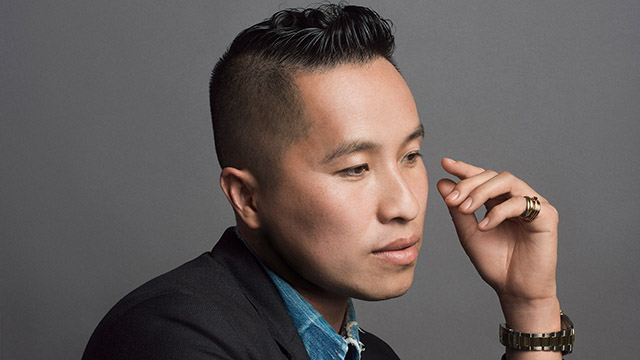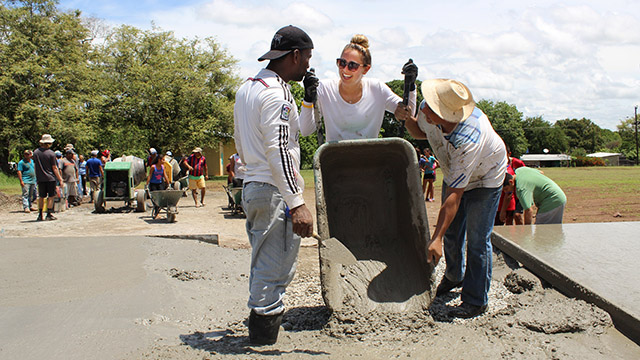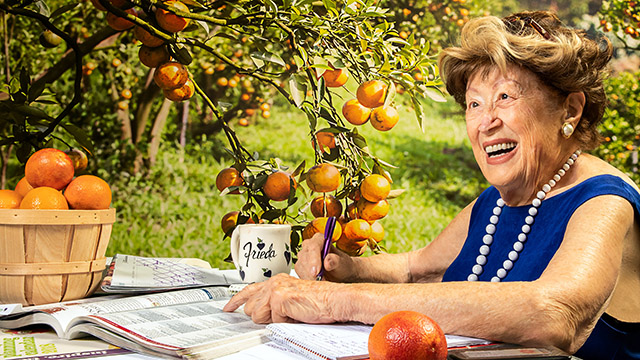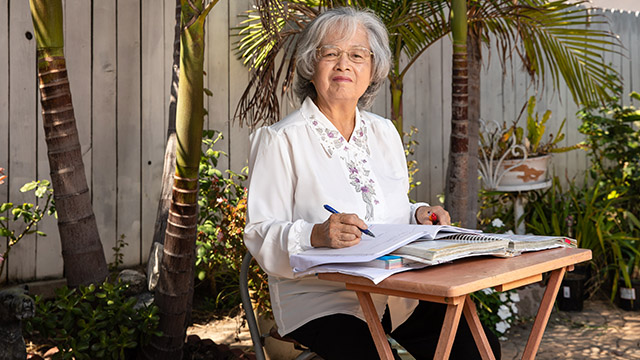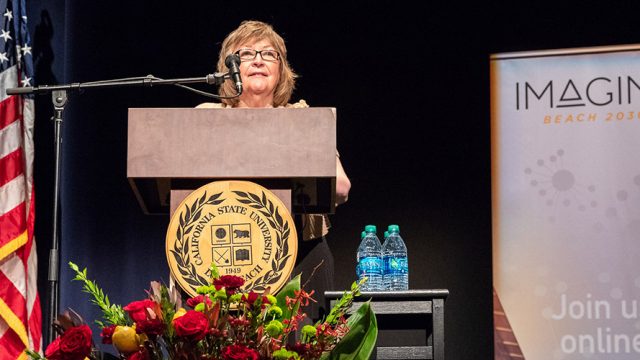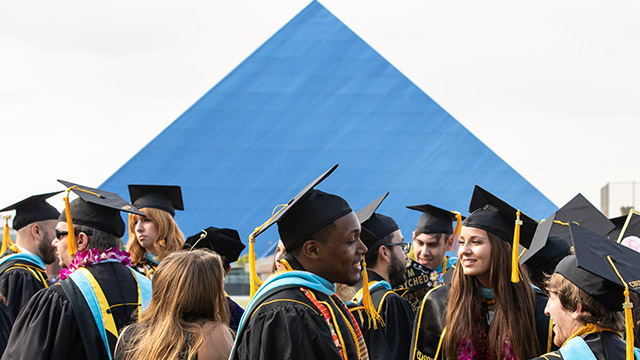Chasing the Harvest
This is the accessible version of the story. See the full interactive version.
Title: Chasing the Harvest
Migrant workers follow the harvest to find jobs. One student is also hoping her studies will yield a bright future. This is her story.

Twenty-year old Guadalupe Ayala-Arroyo is a third-year psychology major. She’s also a migrant worker helping her parents harvest grapes and strawberries during winter and summer break.

“I never imagined my parents having breakfast on the floor with dirt and little bugs crawling everywhere. I was shocked. The first time I went to work with them I said, ‘You guys work in these conditions?’ But you learn to go with it.” – Guadalupe
Video:
Guadalupe: After I get home from school in May, I go work with my parents in Coachella because the grape starts over there. And it usually ends like late June or early July. And after that they come over here. I’ve been working with my parents since I was like sixteen and I’m twenty now about to turn twenty-one so four to five years. Well I don’t like it but you have to do what you have to do. But I always had aspirations of being something else. I saw how tired my parents would get home from work. Video end.

Guadalupe and other migrant workers can be in the fields for 10 to 12 hours a day. Summers in Coachella are particularly difficult because of soaring temperatures.
Looping video of tarp blowing in the wind.
One of the biggest struggles for migrant students is getting a quality education while constantly moving. Some families move every two to three months following the harvest. Some even travel from state to state.
Video:
Guadalupe: I remember going from elementary to elementary school. Sometimes here in Arvin or Bakersfield, Delano. I went through a lot of elementary schools when I was smaller, but as soon as I started middle school my parents decided to be going to Coachella as soon as school started. Video end.

Forty percent of all migratory or seasonal farmworkers in the U.S. live in California. Older children of migrant workers often do farm work alongside their parents.
Looping video of farm workers milling about and preparing for the day’s work.
The Migrant Education program in Los Angeles County serves 5,000 to 6,000 migrant students. Almost all migrant students who attend university are first generation college-goers.
Video:
Guadalupe: My Dad never got to go to school. He doesn’t know how to read or write. The only thing he knows how to do is his signature, like write his signature. My Mom she went to I guess it would be like middle school in Mexico and that’s it. They were really happy when I decided that I wanted to keep studying. When I started high school my Mom started going to the Migrant Program workshops and they would teach them like about college and what tests I needed and all that stuff and that’s when my Mom started becoming really supportive about it and, “did you take the test, are you going to apply, are you going to this?” And she was always really supportive. Video end.

“I was very afraid of you going to college because I had no idea what you were up against. But I knew that you were intelligent and that you could overcome anything. The conferences and workshops helped me let go. They encouraged me to let you fly on your own.” – Maria Ayala, Guadalupe’s mother

Many migrant parents do not send their kids to college because they are fearful or ill-informed. Some parents also rely on their children to help with finances.
Workshops teach parents about the application process, the kind of aid available and what to expect when their children are admitted.
Video:
Guadalupe: The CAMP program definitely helped me out a lot going into school. It was really hard for me to move away from where I lived. I had never been away from my parents so when I came into the university I was scared. When I met people from CAMP it was just a good feeling to know that I had people there. Video end.
Looping video of Guadalupe studying in the computer lab.
CSULB is host to one of eight College Assistance Migrant Programs (CAMP) in California – a federally-funded program to assist high school-aged students to get into college and successfully complete their first year.

CAMP staff help migrant students fill out college applications and apply for financial aid. Once admitted to college, students and their parents are taught how to navigate the university system, make financial aid decisions, sign up for classes, and are given resources, too.
CSULB’s CAMP program is funded to serve 40 new students per year. About 70 percent of CAMP students achieve graduation – a higher average than the university as a whole.

“When I go home, I think to myself: See, this is why you stay up late and do good on your exams. So you don’t end up here. That’s what I tell myself when I’m working there.” – Guadalupe
Video:
Guadalupe: “You’re probably not going to be able to see a difference.”
Guadalupe’s sister: “It looks a lot shinier than the other ones.”
Guadalupe: My sister’s here working as well and I want to give them something to look up to, a role model. I want them to see that if she wants to do it anythings possible, I did it. And if there’s anything that I can help her, I’ll help her in anything. Video end.
“I am proud because you are my first one, and now your sisters will follow in your footsteps.” – Maria





